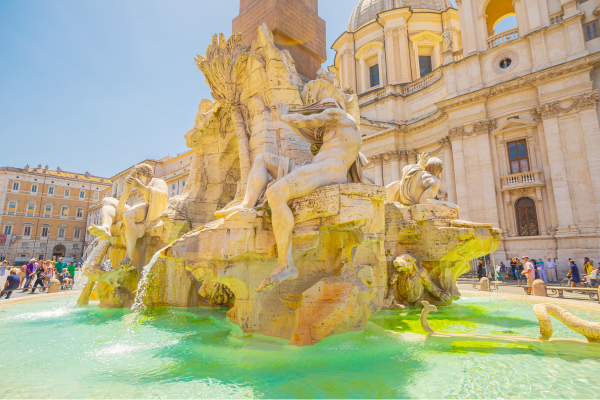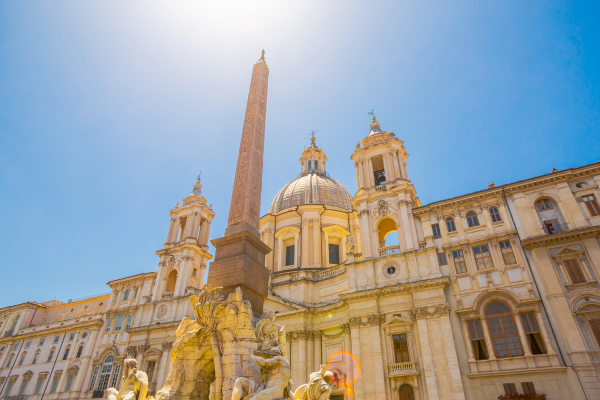Many travellers have seen this impressive fountain, but what does it represent?
The Fountain of the Four Rivers (Fontana dei Quattro Fiumi) is a large, recognisable structure in the centre of Rome. On a walk through Piazza Navona, it’s impossible to miss the towering obelisk at the centre of the fountain. The sculptures surrounding the base of the monument each symbolise something specific.
History of the fountain
In the mid-1600s, Pope Innocent X Pamphilj decided to commission an artist to design the fountain. The Pope opened a competition, for artists to submit designs. One of the most well-known artists at the time, Gian Lorenzo Bernini was prohibited from participating. This was because of Bernini’s close association with the previous Pope.
Despite this, Bernini submitted a design for the fountain. It came as a surprise to many when his design was commissioned. Shortly after submitting his proposal, the Pope chose Bernini’s design and Bernini began sculpting what is his largest piece of art.
What does the fountain represent?
The Fountain of the Four Rivers represents the four major rivers known to cartographers during the Renaissance. The four rivers include the Nile River in Africa, the Danube River in Europe, the Ganges River in Asia, and the Río de la Plata in the Americas. Each river is represented by a sculpture of a river God, as well as flora and fauna from each geographic location.
The Nile River God has a piece of cloth draped over his head. This represented how the location of the Nile’s source of water was unknown. The Ganges River God holds an oar. This represented how navigable the river was. The Danube River God can be seen touching the Papal coat of arms. This represented that the Danube was the closest of the four rivers to Rome. The Río de la Plata God sits atop a mound of coins. This symbolised the riches that America was able to provide to Europe.
The tall Egyptian Obelisk is hard to miss as it juts above the centre of the fountain. The monument was built in AD 81 and symbolises the Papal power. The statues below are sort of kneeling, supporting the large monument. The obelisk is also inscribed with a dove that carries an olive twig. The dove was a family emblem of Pope Pamphilj and is also a symbol in the Church.
This incredible fountain is one of three fascinating fountains found in Piazza Navona.



